|
Tweed, Ontario, the Moira River near the walking bridge and dam:
rock-bottomed river with fast flowing water, rapids and emergent rocks, but also quiet pools and backwaters.
The shoreline vegetation is mostly trees with a few small clearings supporting tall grasses and wildflowers.
|
|
The two exuviae depicted below were discovered on May 18, 2015.
Their characteristics strongly suggested they belonged to Rusty Snaketails, and this prompted a search for emerging and molting naiads.
|
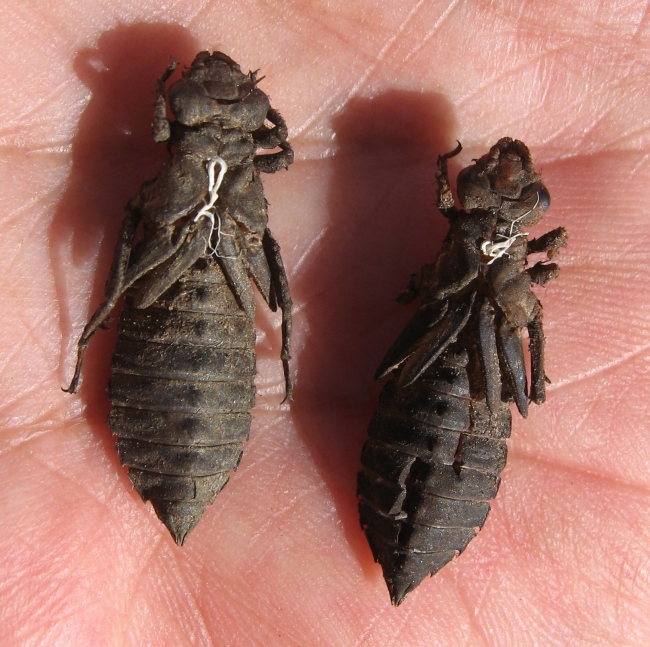
|
A teneral dragonfly already in the process of emerging was encountered the following day (May 19, 2015) at 9:20 AM.
|
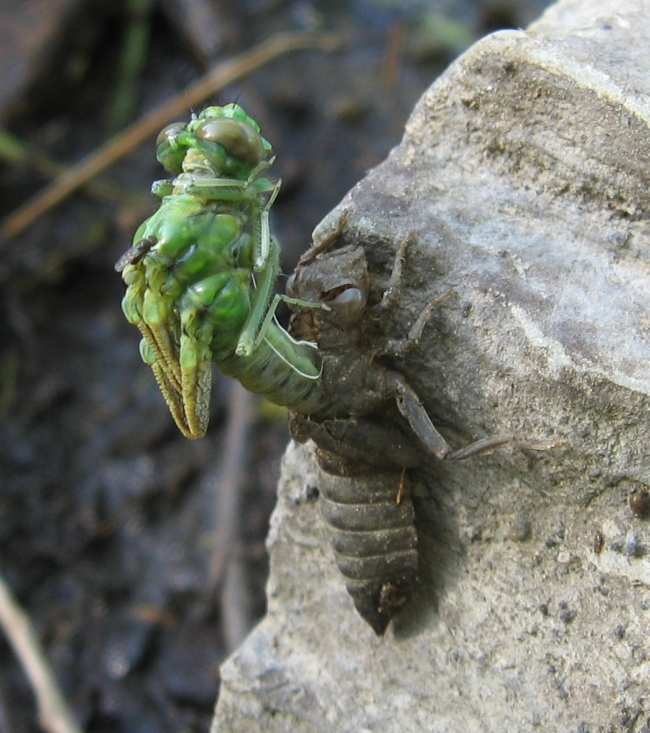
|
9:25 AM ... the teneral is free of its larval exoskeleton, and we can see that it's a female.
|
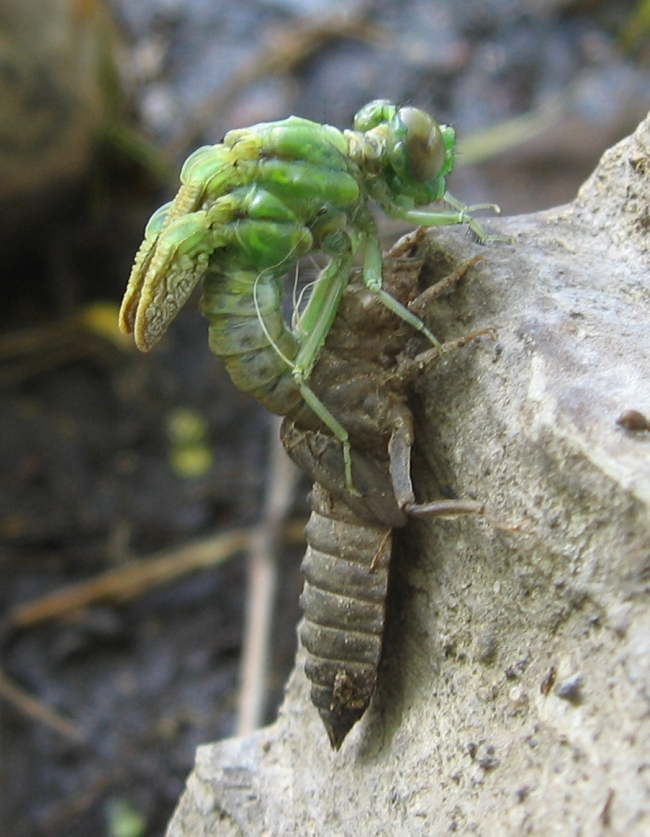
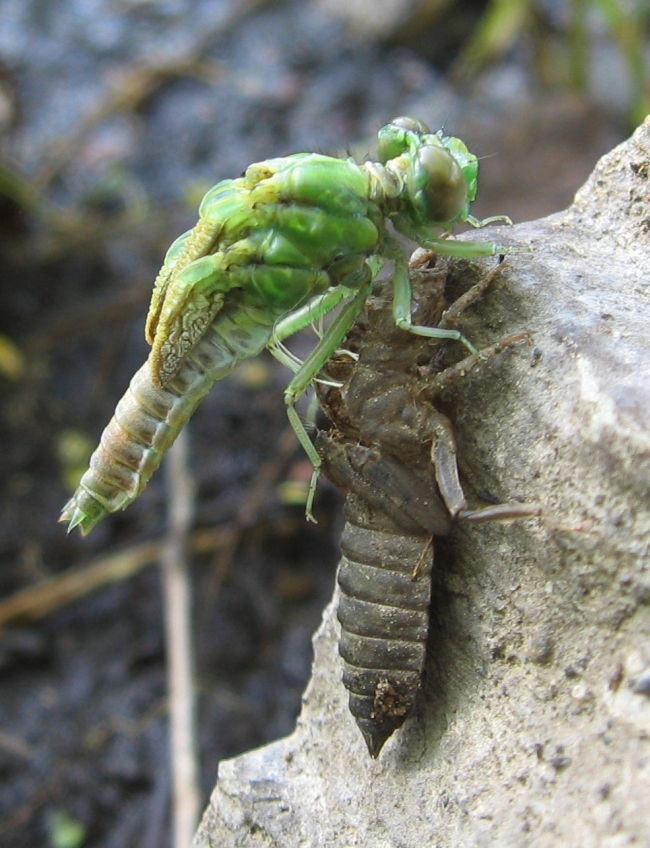
|
9:30 AM ... over the next thirty-one minutes, the wings and abdomen expand to their adult dimensions.
|
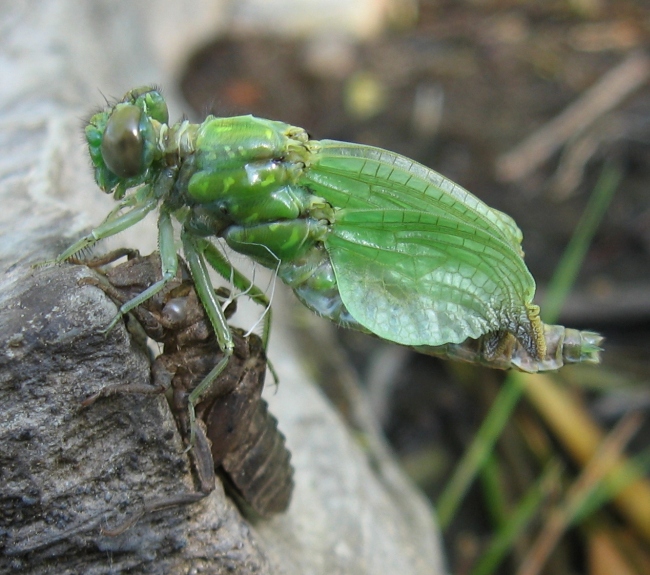
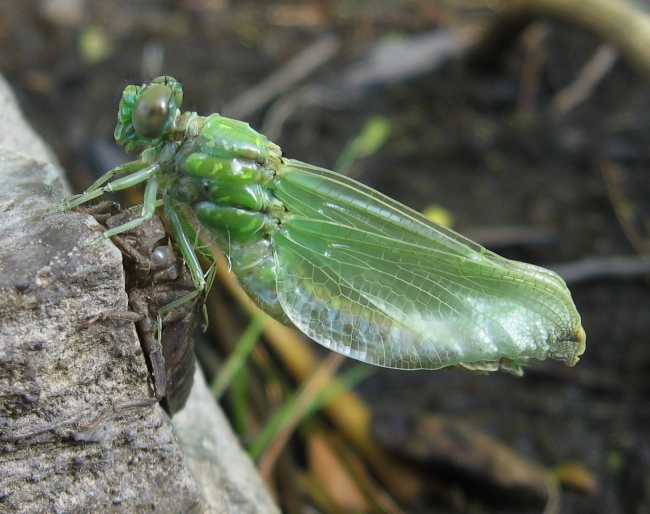
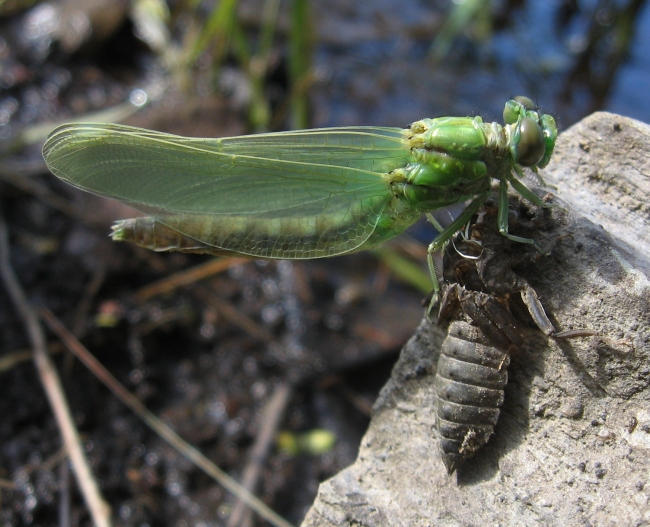
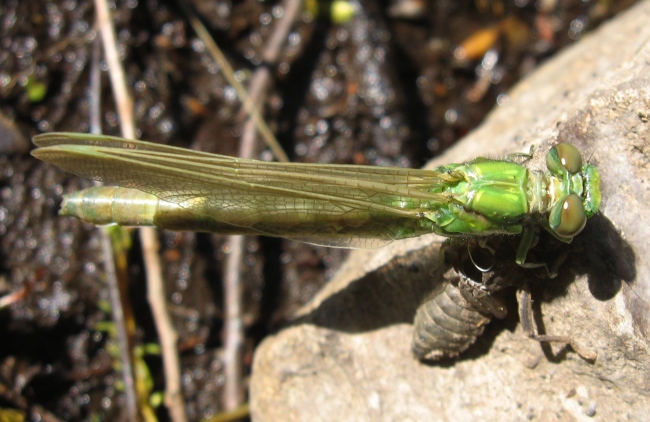
|
10:01 AM ... the wings are fully expanded and the teneral dragonfly is capable of weak flight.
|
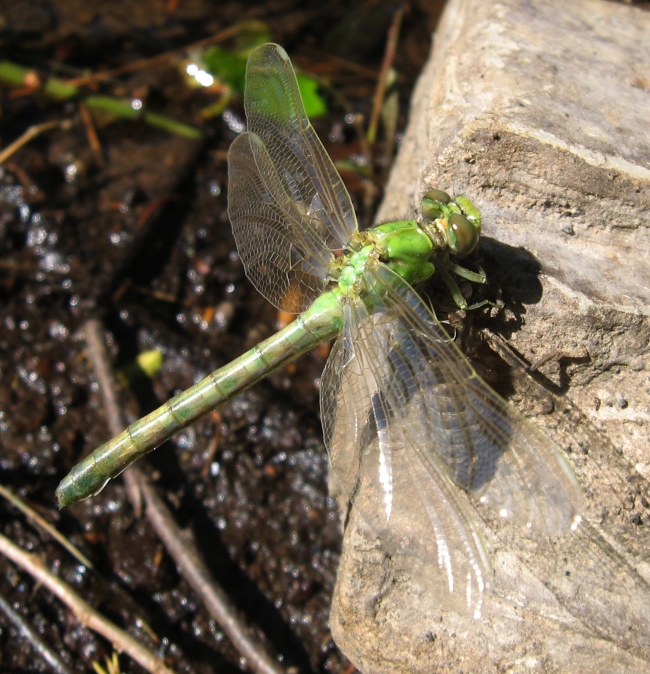
|
10:10 AM ... care must be taken with a teneral dragonfly, as the exoskeleton and wings are soft and it can easily be injured.
Don't handle the insect, instead allow it come to you and perch in whatever manner it feels comfortable.
|
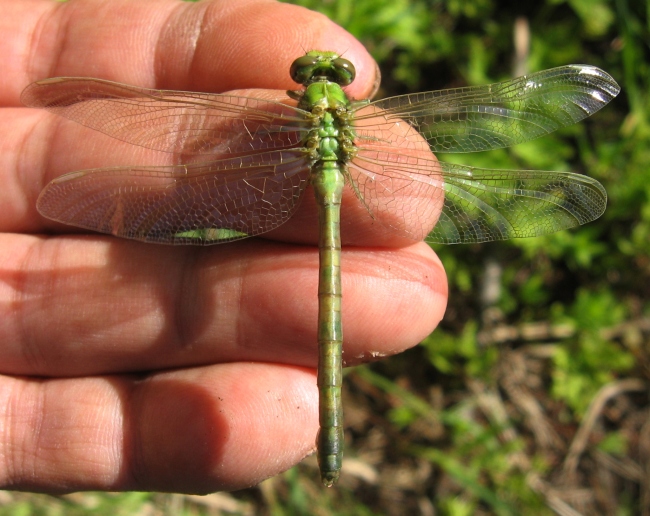
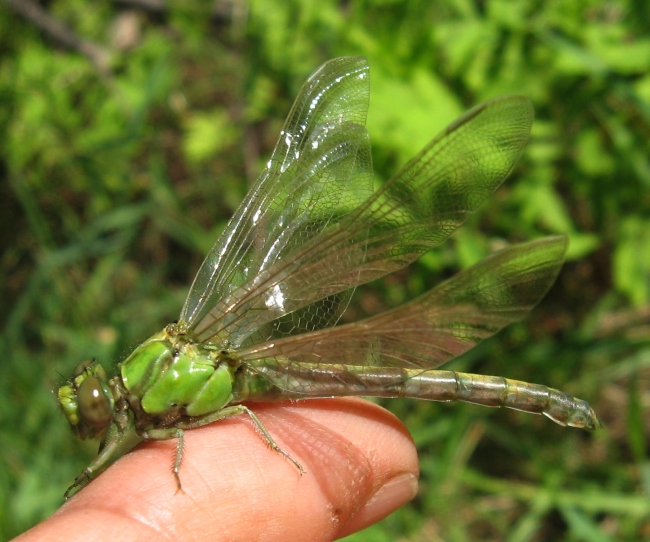
|
Since the teneral dragonfly has not attained its full adult coloration and patterning, how do we know for certain that this is indeed a Rusty Snaketail?
The insect was carefully perched on my finger and also transferred to a branch, and after several attempts (it's tough to acquire a good macro of an uncooperative subject) satisfactory images of the subgenital plate were obtained.
And there we are, no doubt about it – Ophiogomphus rupinsulensis.
|
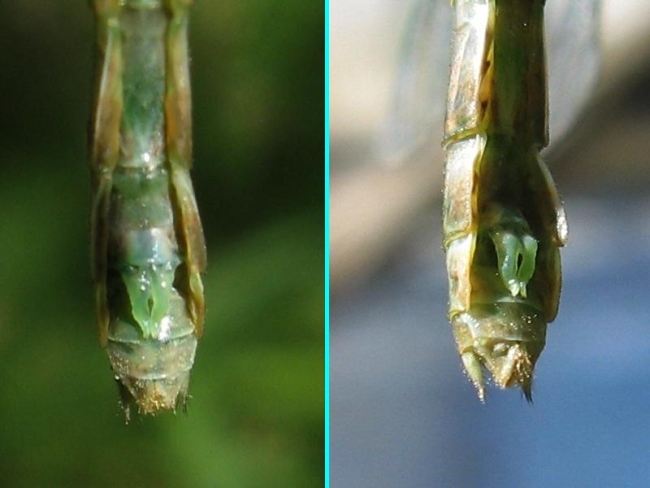
|
The exuviae was collected to compare it to the two exoskeletons found the previous day, and all three were kept for future reference.
|























